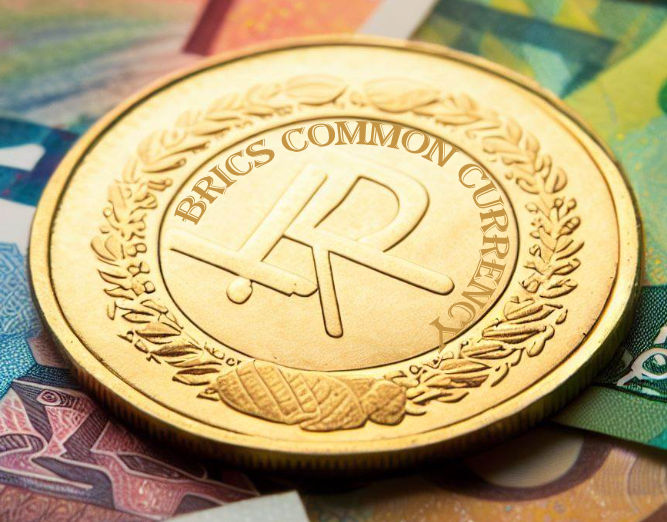 Back in 2001, Jim O’Neill an economist for Goldman Sachs, coined the term “BRIC” to describe fast-growing economies that he predicted would collectively dominate the global economy by 2050. The countries were Brazil, Russia, India, and China. Later, with the addition of South Africa, this came to be called “BRICS”. Although the term was originally intended for investment purposes, in 2009 they formed an intergovernmental organization and regularly hold Summit Meetings.
Back in 2001, Jim O’Neill an economist for Goldman Sachs, coined the term “BRIC” to describe fast-growing economies that he predicted would collectively dominate the global economy by 2050. The countries were Brazil, Russia, India, and China. Later, with the addition of South Africa, this came to be called “BRICS”. Although the term was originally intended for investment purposes, in 2009 they formed an intergovernmental organization and regularly hold Summit Meetings.
The fifteenth annual BRICS summit was held August 22-24, 2023, and was attended by the heads of state or heads of government of the five member states. Putin attended virtually due to an arrest warrant from the International Court for War crimes during the Russian invasion of Ukraine. In the last couple of years, 14 other countries have applied for membership including:
 Algeria
Algeria Bahrain
Bahrain Bangladesh)
Bangladesh) Belarus
BelarusBolivia
Cuba
Honduras
Kazakhstan
Kuwait
Palestine
Senegal
Thailand
Venezuela
Vietnam
BRICS has formed a Development Bank to help fund infrastructure projects. At the 2015 BRICS Summit, they began hashing out an alternative to the SWIFT banking system in an effort to prevent the U.S. from having too much control over international finance.
At their 2023 summit in South Africa, BRICS countries committed to study the feasibility of a new common currency. Russia is especially interested in alternatives to the Dollar since his invasion of the Ukraine resulted in the Dollar, SWIFT, and international finance was used as a weapon against Russia. In today’s article Daniel Lascalle looks at the viability of an alternative BRICS currency. ~Tim McMahon, editor
Will the BRICS Dethrone the U.S. Dollar?
By Daniel Lacalle
The summit of the so-called BRICS (Brazil, Russia, India, China, and South Africa) has closed with an invitation to join the group extended to the Emirates, Egypt, Iran, Saudi Arabia, Argentina, and Ethiopia.
The summit has generated a lot of headlines about the impact of this widespread group of nations, including speculation about the end of the U.S. dollar as a global reserve currency if this group is perceived as a threat to the United States or even the International Monetary Fund.
Several things need to be clarified.
Many political analysts believe that China lends, invests, or supports in return for nothing. China is a major economic power, but it has no interest in being a global reserve currency. Its currency is currently used in only 5% of global transactions, according to the Bank of International Settlements.
Both China and Russia’s currencies have capital controls. It is impossible to have a global reserve currency that lacks freedom of capital movement. More requirements are needed than solid gold reserves to have a stable fiat currency. It is essential to guarantee economic freedom, investment, legal security, and the free movement of capital, as well as an open, transparent, and diversified financial system.
China and Russia are much more demanding and rigorous lenders than many politicians think. It seems that some emerging market politicians think that joining China and Russia will be a kind of free money panacea.
Currency Stability
Fiscal Responsibility
The BRICS alternative starts with a major Achilles heel. China and Russia are going to have major difficulties imposing fiscal and monetary policy restrictions on their partners. Let us not forget that several of these partners have joined the group, thinking that from now on they will be able to continue printing money and spending without control, but their monetary imbalances will be distributed to other nations.
The euro has been a success because liberal democracies with independent institutions, broad economic freedom, and legal certainty agreed to align their policies for the common good, creating a solid currency that avoided the debacle created by the inflationary spirals that were the norm in Europe historically when governments devoted themselves to transferring their imbalances to citizens’ wages and savings through monetary destruction. This does not seem easily replicable with BRICS and guests.
China, however, can increase its control over all these countries by implementing rigorous monetary and fiscal policies. It is the strongest lender of all the BRICS, but it is unlikely to take on the role of the euro’s Germany, willing to absorb the excesses of others in exchange for a common project. China is going to increase its control over the countries in the group, but it is not likely to jeopardize the stability and security of its enormous population by sinking the currency. The Chinese government is probably analyzing how the euro is losing monetary prudence and reaching the conclusion that it cannot take that same risk with some of these new partners. However, China will probably make the most of its financial strength to lend, increase its domestic and international growth options, and access abundant and cheap commodities.
China is the big winner of the BRICS summit. The Chinese government probably knows that many of its partners are going to continue increasing their imbalances, and this may allow China to strengthen its leadership position. However, I find it hard to believe that China will agree to the creation of a currency that others can use to trigger inflationary imbalances.
U.S. Deficits
Meanwhile, in the U.S., the government may jeopardize the credibility of the U.S. dollar if it continues to generate deficits of two trillion dollars a year, more than a $14 trillion estimated deficit by 2030, and with an increasing number of irresponsible advisers saying that it can create all the money it wants without risk. The fiscal credibility, institutional independence, and economic freedom of the U.S. dollar, the most widely used currency in the world, cement its leadership. If the government undermines these strengths, the dollar will lose its reserve status.
The end of the U.S. dollar, if it comes, will not arrive through competition from another fiat currency, as the temptation of governments to destroy the purchasing power of the issued currency is too strong. It will probably come from independent currencies.
This article originally appeared here and has been reprinted under the Creative Commons License.
You may also like:.
